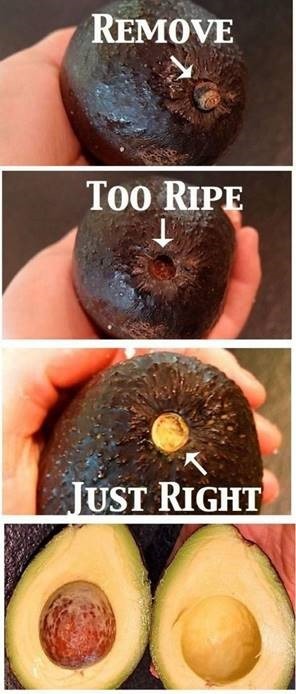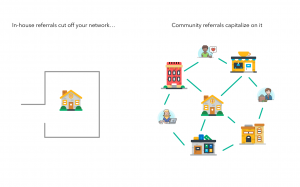
I am not a morning person. Quite the opposite, actually.
Sometimes at night, when everyone else is sleeping, I find myself lost in highly relevant-to-my-life quizzes (Are You More Ina or Jeffrey?) and endless chains of internet roundups.

(Nailed it.)
These roundup topics range wildly from the immediately relevant 10 of the Best Yoga Poses for Sleep to the inspirational 10 Instagram Feeds to Follow and Swoon Over to the occasionally helpful 15 Best iPhone Apps You’re Not Using.
As I toggle between Facebook, Feedly, and Pinterest, the “Top # Somethings of the Week” and “Best # Thingys You’re Missing Out On” posts follow me around the internet like little remarketed stalkers, tempting me to forgo sleep in favor of more content.
In the morning, I go to work and write some myself. And people click.
The Truth(s) About Roundups
- The world is filled with procrastinators like me, who will gobble up clickbait-y roundups like there’s no tomorrow.
- The world is also filled with curious, time-constrained people like me, who appreciate well-written roundups for their substance.
- Roundups work for readers because they are organized, easy to read, and quickly get to the point. Roundups allow readers to skip around, skim for the information you want, and ignore the rest.
- Roundups work for marketers because they drive traffic to your content, allow you to form partnerships with industry leaders, and occasionally score you a high quality link.
- You don’t have to have “Buzz” in your company name to write excellent, traffic-driving roundup posts. This popular form of content marketing is accessible, scalable, and learnable. Here’s why.
5 Questions To Answer Before Writing A Roundup
1. What Kind Of Roundup Do You Want To Write?
Roundups come in many forms: the link roundup, the top tips roundup, the how to roundup, etc.
Searching for examples of roundups in your area of expertise is easy. Just google:
- ~Keyword + “Roundup”
- Weekly/Monthly Roundup
- Top 10 (or any number, really)
- Best of
- This Week In
- Link Love
- Friday Finds
- Tuesday Tips
Yeah, roundup titles tend to be alliterative. And because roundups are so simple to iterate, many content writers create them on a regular basis. (#fetchingfriday #linksilove)
2. Where Will You Get Your Content?
Your content can come from one source, many sources, from your blog or from someone else. But here’s the rule: the content needs to stick to one theme.
Do you work with amazing photography? Try a Pictures of the Day slideshow, like this one from The New York Times’ Lens Blog.
Do you work with a deep-thinking fanbase? Try inspiring quotes from famous people or top tips from industry leaders. We even tried this in Slideshare form, and it worked quite well. Pro tip: learn to use Canva.
Think social media content, like top tweets, Facebook posts, Instagram pics, Vines, or YouTube videos. Including social posts from other people and organizations is a great conversation starter.
Try your own blog posts! Even better if they are the posts that are already getting a lot of traffic and engagement on your site.
3. How Will You Format Your Roundup?
Oh, the many creative shapes and sizes of roundups! Will you film a video? Create a slideshow? A numbered list is always a great way to go.
Throw in some attention-grabbing images, gifs, or memes, and you’re on your way.
Remember, roundups do not have to be beautiful–though it can’t hurt. It’s the accuracy (and novelty) of the information that matters most.
Case in point: Simple Life Hacks That Will Change Your Life Forever. Because of this post (and it’s crazy clickable image on Pinterest), I am now MacGyver. What was the so-clickable image?

Good, isn’t it? Got me right in my California girl, guacamole-eating heart.
4. How Will You Promote Your Roundup In A Way That Benefits You?
If you write a roundup using outside content, reach out to every contributor included in your roundup, and tell them that they made it onto your list. You can do this through email or via social media.
If you reach out via email, ask them to share the news. (Sometimes you won’t even have to ask – just letting them know that you’re featuring their content might trigger reciprocity.)
If you reach out via social media, tweet at the person or organization with a link to your roundup. Odds are, they will RT to their audience.
If you only used your content in your roundup, you can still reach out to industry leaders who might be interested in the news. You can share the content in your newsletter, post it on your blog, or submit it to a site like Buzzfeed.
You can even email people whose roundups you admire, and see if they’d be interested in featuring your content in a future link post. You have nothing to lose, and you could gain a quality link.
Including images in your roundup is a great way to make it compelling when you share it on social media. Post it on all your social accounts (this is what Pinterest was made for), and designate a small amount of spend to promote some Tweets and FB posts. Even $25 can give your content a great boost.
5. Where Can You Find Inspiration?
Your readers!
Look at your Google Analytics. Which of your content gets the most traffic? What’s the common theme? That is what your readers want to learn more about. Do your readers frequently comment asking the same questions? Write an FAQ roundup.
You could even make a roundup of your top posts. It’s a great way to make your readers aware of older, evergreen content in a new format.
Coming up with roundup content is like paying to promote your content: look for the content that already has high levels of traffic plus engagement. That’s what you want to highlight here.
Looking for outside inspiration? Go go Buzzfeed, Huffpo, Pinterest, Facebook (you know your friends are sharing these left and right). Check out your favorite blogs.
I know my Friday morning isn’t complete without Cup of Jo’s “Have a Fun Weekend” roundup. So light and lovely and full of hidden gems.
So there you have it-everything you need to get started on your first post. And if this isn’t your first roundup rodeo, I hope you now have some new inspiration to go out and write some more!
* Leader image with work by hopeless128
Rita Kreig is the Inbound Marketer at Magoosh, an online test-prep startup in Berkeley, CA. She earned her Masters of Pacific International Affairs from UC San Diego, where she also studied nonprofit management. Rita loves all things education, marketing, and community development – be it creating and sharing new content or analyzing metrics. Follow Rita on Twitter and Google+.
How To Create Traffic Driving Roundup Posts Efficiently
Written by Rita Kreig, magoosh.com
The post How To Create Traffic Driving Roundup Posts Efficiently appeared first on Search Engine People Blog.
(285)
Report Post





